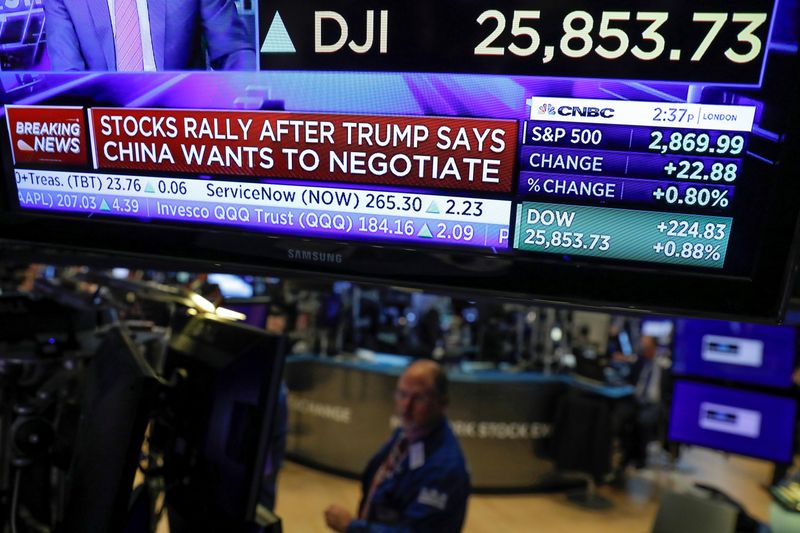
FILE PHOTO: A screen on the trading floor at the New York Stock Exchange (NYSE) in New York City, U.S., August 26, 2019. REUTERS/Andrew Kelly
December 13, 2019
By Beth Pinsker
NEW YORK (Reuters) – Tax-loss harvesting is all about finding losers in your investment portfolio to offset winners so you pay less tax.
That is not easy in a year when the S&P 500 is up 26%.
“The best-case scenario is to capture losses when the market is down. Flat is good, too,” said Robert Holderith, CEO of Green Harvest Asset Management in New York.
Conventional wisdom is to put this financial task on your to-do list in December, but this year, you need to think a bit broader and more long-term.
“Waiting to the end of the year is a reactionary tax-planning move when there could have been opportunities throughout the year,” said certified financial planner Doug Boneparth, who is based in New York.
At year-end, you need to mostly be concerned with your holdings in brokerage accounts. But to keep everything balanced holistically and your tax efficiency maximized, you need to consider your tax-deferred accounts too, like IRAs and 401(k)s.
For instance, consider weighting your tax-deferred accounts more heavily toward the dividend as well as other yield-producing elements in your portfolio, because when they generate income you will not get taxed right now.
That leaves you free to hold more growth positions – like exchange-traded index or sector funds – in taxable accounts. ETFs do not distribute capital gains as frequently as traditional mutual funds do, and, therefore, are more tax-efficient.
Individual investors or their advisers need to monitor how markets fare throughout the year to make sure portfolios are staying on track, looking for market and sector dips driven by the news or other macroeconomic factors, and then sell losers as you go.
“In March, there were a couple of Presidential candidates talking about healthcare, and that drove healthcare stocks down. So we captured that,” said Holderith.
At the very least, advisers say to use the end of the year as motivation to look over your brokerage statements, even if you do not make moves right away.
Tax-loss harvesting is especially valuable in high-tax states like New York or California. If you were, say, in a 50% combined federal and state tax bracket and you made $50,000 in gains in 2019, you would owe $25,000 on that in taxes. “If we’re able to generate $50,000 in losses, we put that $25,000 back in your pocket,” said Holderith, whose firm specializes in helping clients through this process.
The real benefit of saving that money is not immediate, but in how it will grow. In 20 years at average return, you could have $100,000, Holderith added.
ACTION PLAN
If you are behind the 2019 curve, it might actually be impossible to catch up.
“In some cases, you might not have any losers, which means you have done all you could,” said Hans Olsen, chief investment officer of Fiduciary Trust Company in Boston.
December might not even be the right time to rebalance or re-allocate your portfolio at all, despite these typically being tasks on end-of-year planning lists.
You might be better off waiting until the new year, said Todd Rosenbluth, head of ETF and mutual fund research at independent research firm CFRA. For one thing, if you make trades in December, you will have a tax burden right then and there. If you make your transitions in early January, you delay that tax implication for the next year to the end of 2020.
“We don’t know what 2020 will bring, but it’s unlikely we’ll see another 26% gain again. So you might find other ways to off-set your gains in 2020,” Rosenbluth said.
The good news? If you do move things around in your portfolio, you can now find ways to do it without paying commissions on the trades, as major players like Schwab, Fidelity, E-Trade and TD Ameritrade have moved to zero commissions for most online trades.
“The cost was relatively small before-hand. But now you can do so without having to think about that cost at all,” Rosenbluth said.
(Follow us @ReutersMoney or at http://www.reuters.com/finance/personal-finance. Editing by Lauren Young and David Gregorio)

